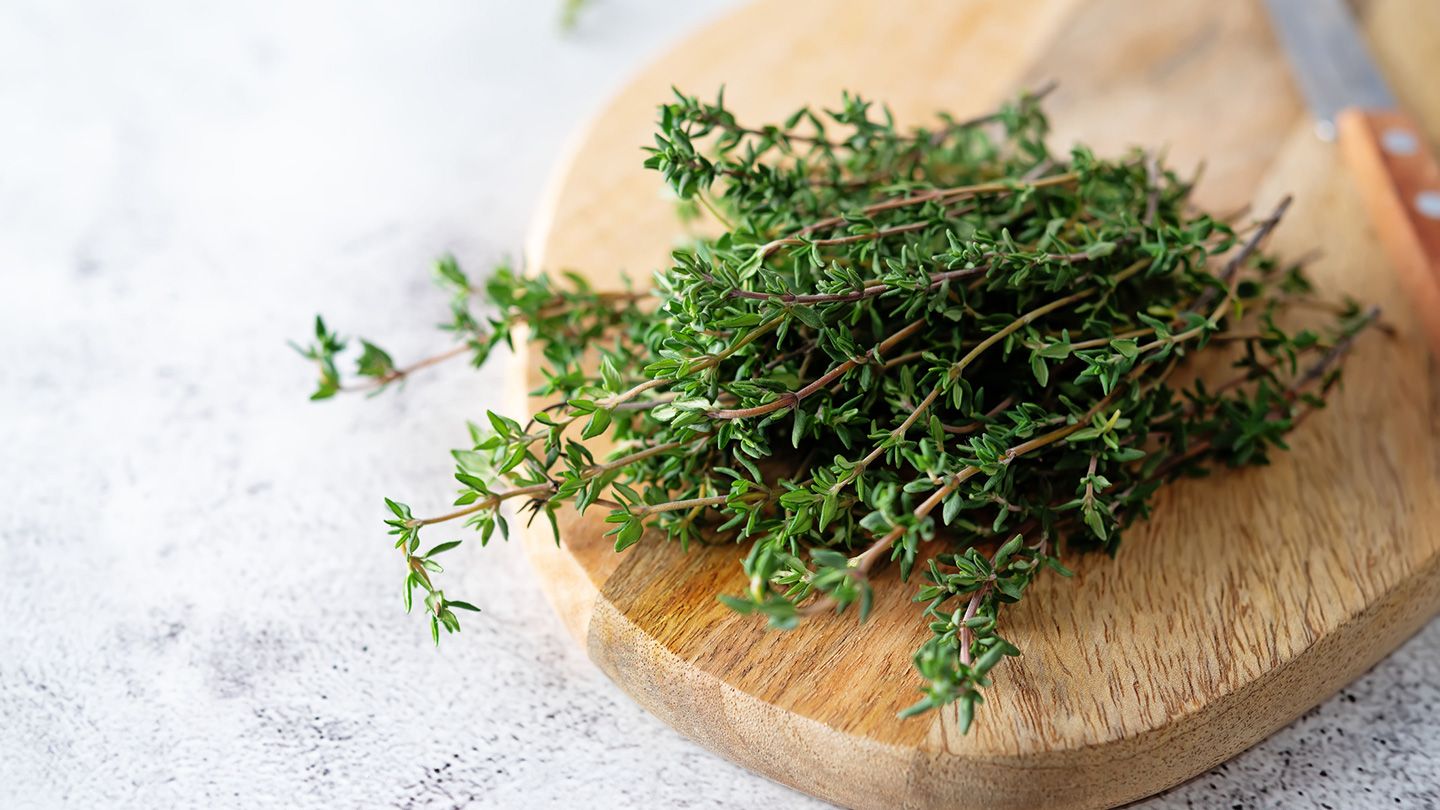Home>Gardening Basics>Getting Started>What Is A Good Pre-Emergent For Weeds


Getting Started
What Is A Good Pre-Emergent For Weeds
Modified: January 22, 2024
Looking to prevent weeds? Learn about the best pre-emergent options for weed control and get started on your journey to a weed-free garden or lawn with our helpful guide.
(Many of the links in this article redirect to a specific reviewed product. Your purchase of these products through affiliate links helps to generate commission for Chicagolandgardening.com, at no extra cost. Learn more)
Table of Contents
Introduction
When it comes to maintaining a beautiful and healthy lawn or garden, one of the biggest challenges homeowners face is controlling the growth of weeds. Weeds can be a persistent nuisance, competing with desired plants for nutrients, water, and space. They can quickly take over an area if left unchecked, causing a decreased aesthetic appeal and even potential harm to the surrounding vegetation.
While there are several methods for weed control, using a pre-emergent herbicide is often considered the most effective and proactive approach. Pre-emergent herbicides work by preventing weed seeds from germinating and establishing themselves in the soil, ultimately curbing their growth and reducing the need for manual weed removal.
However, with a plethora of pre-emergent herbicides available on the market, choosing the right one can be a daunting task. Factors such as weed type, climate, soil conditions, and personal preference all come into play when selecting a suitable pre-emergent herbicide for your specific needs.
In this article, we will explore the intricacies of pre-emergent herbicides and provide valuable insights to help you make an informed decision. Whether you are a gardening enthusiast or a homeowner looking to spruce up your lawn, this guide will equip you with the knowledge to effectively combat and prevent weed growth, ensuring a vibrant and weed-free landscape.
Understanding Pre-Emergent Herbicides
Pre-emergent herbicides are a type of weed control product that is applied to the soil before weed seeds germinate. Unlike post-emergent herbicides that are used to kill already established weeds, pre-emergent herbicides work as a preventive measure by inhibiting the growth and establishment of weed seedlings.
These herbicides create a barrier on the soil’s surface, either by forming a physical barrier or by inhibiting the enzymes necessary for weed seed germination. When applied correctly, they can effectively reduce weed populations and minimize the need for manual weeding, making them an essential tool for weed control in lawns, gardens, and agricultural settings.
It is important to note that pre-emergent herbicides are most effective against annual weeds, which complete their life cycle within the span of a year. Examples of common annual weeds include crabgrass, chickweed, and foxtail. Perennial weeds, on the other hand, have deeper root systems and may require additional weed control measures.
Another key aspect to understand about pre-emergent herbicides is their selectivity. Selective pre-emergent herbicides target specific types of weeds, while leaving desirable plants unharmed. Non-selective pre-emergent herbicides, on the other hand, can kill or inhibit the growth of both weeds and desirable plants. Careful consideration should be given to the selectivity of the herbicide to avoid damaging the plants you want to keep.
Pre-emergent herbicides are typically available in granular or liquid form. Granular herbicides are applied by evenly spreading the product over the intended area, while liquid herbicides are mixed with water and sprayed onto the soil surface. Following the instructions on the product label is crucial to ensure proper application and achieve the desired results.
It is worth noting that pre-emergent herbicides are not effective on existing weeds. Therefore, it is important to assess the life cycle of the weeds present in your lawn or garden and determine whether a pre-emergent or post-emergent herbicide is most appropriate for control.
By understanding the purpose and mechanics of pre-emergent herbicides, you can make informed decisions about when and how to use them to effectively manage weed growth and maintain a lush and weed-free landscape.
Factors to Consider when Choosing a Good Pre-Emergent
Choosing the right pre-emergent herbicide is crucial for effectively controlling weeds in your lawn or garden. Consider the following factors when selecting a pre-emergent herbicide:
- Weed Type: Different pre-emergent herbicides target specific types of weed seeds. Identify the common types of weeds in your area and choose a pre-emergent herbicide that is effective against those specific weed species.
- Application Timing: Pre-emergent herbicides work by preventing weed seeds from germinating. Understanding the germination period of the target weed species is essential for proper application. Applying the herbicide too early or too late may result in ineffective weed control.
- Climate and Soil Conditions: Consider the climate and soil conditions in your region. Some herbicides are more effective in certain climates or soil types. Read the product label and choose a pre-emergent herbicide that is suitable for your specific environmental conditions.
- Selectivity: Determine whether you need a selective or non-selective pre-emergent herbicide. Selective herbicides target specific types of weeds while leaving desirable plants unharmed. Non-selective herbicides can damage or kill both weeds and desirable plants, so use them with caution.
- Application Method: Consider the ease of application and the size of the area you need to treat. Granular herbicides are typically spread evenly over the soil, while liquid herbicides are mixed with water and sprayed. Choose the application method that best suits your needs.
- Effectiveness Duration: Some pre-emergent herbicides provide longer-lasting weed control than others. Consider how long the herbicide will remain active in the soil and choose one that offers effective weed control for the desired duration.
It’s important to closely follow the product label instructions for proper application rates and timing. Applying too much or too little of the herbicide can result in ineffective weed control or damage to desirable plants.
Additionally, consider your personal preferences and any specific requirements you may have. For example, if you prefer organic gardening methods, look for pre-emergent herbicides that are approved for organic use.
By considering these factors and selecting the appropriate pre-emergent herbicide, you can effectively prevent weed growth, protect your landscape, and ensure a beautiful and weed-free outdoor space.
Popular Pre-Emergent Herbicides for Weed Control
When it comes to pre-emergent herbicides, there are several popular options available in the market. Here are some of the top pre-emergent herbicides widely used for weed control:
- Prodiamine: Prodiamine is a selective pre-emergent herbicide known for its broad-spectrum control of many annual grasses and broadleaf weeds. It is effective against common weeds such as crabgrass, goosegrass, and annual bluegrass.
- Dithiopyr: Dithiopyr is a versatile pre-emergent herbicide that provides both pre- and early post-emergent control of various grassy and broadleaf weeds. It is commonly used to combat weeds like crabgrass, chickweed, and clover.
- Pendimethalin: Pendimethalin is a popular pre-emergent herbicide known for its effectiveness against annual grasses and certain broadleaf weeds. It is commonly used to control weeds like crabgrass, foxtail, and purslane.
- Siduron: Siduron is a well-known pre-emergent herbicide that is particularly effective against annual grasses and some broadleaf weeds. It is often used for preventing weed growth in sports fields, golf courses, and turf grass areas.
- Oryzalin: Oryzalin is a pre-emergent herbicide that works well against many common annual grasses and broadleaf weeds. It is commonly used in ornamental beds, landscapes, and vegetable gardens to prevent weed infestation.
These pre-emergent herbicides come in various formulations, including granules and liquid concentrates. It is important to carefully read and follow the instructions provided by the manufacturer for proper application and dosage. Remember that effective weed control requires applying the herbicide at the appropriate time, before the targeted weed seeds germinate.
If you are unsure which pre-emergent herbicide is best suited for your specific needs, consult with a knowledgeable professional or seek advice from your local cooperative extension service. They can provide guidance tailored to your region and help you choose the most suitable pre-emergent herbicide for effective weed control.
Remember, no single pre-emergent herbicide will address all weed problems. Consider the types of weeds you are targeting, the selectivity of the herbicide, and the environmental conditions to make an informed decision.
By understanding the characteristics and effectiveness of these popular pre-emergent herbicides, you can select the right product to effectively control weed growth and maintain a clean and healthy landscape.
Application and Usage Tips for Pre-Emergent Herbicides
Proper application and usage of pre-emergent herbicides are essential for maximizing their effectiveness in controlling weed growth. Here are some important tips to keep in mind:
- Read the Label: Carefully read and follow the instructions provided on the herbicide label. The label provides essential information on application rates, timing, safety precautions, and specific recommendations for different types of weeds.
- Timing is Key: Apply pre-emergent herbicides before the targeted weeds’ seeds germinate. Timing can vary depending on the region and the specific weed species you are targeting. Consult local gardening experts or extension services to determine the best timing for application in your area.
- Prepare the Area: Before applying the herbicide, prepare the area by removing any existing weeds or debris. This will ensure that the herbicide comes into direct contact with the soil surface where weed seeds are likely to germinate.
- Uniform Application: Apply the herbicide evenly across the intended area to ensure consistent coverage. Granular herbicides can be spread using a handheld spreader or a mechanical spreader, while liquid herbicides can be applied using a sprayer or watering can.
- Watering In: After applying the herbicide, lightly water the area to help activate the product and ensure that it penetrates into the soil. Follow the recommended watering instructions provided on the herbicide label.
- Prevent Overlapping: Avoid overlapped or excessive application of the herbicide, as this can lead to uneven coverage and increased risk of damage to desirable plants. Use caution when applying the herbicide near ornamental plants or other sensitive areas.
- Consider Rainfall: If heavy rainfall is expected shortly after application, it may wash away the herbicide or reduce its effectiveness. Monitor weather forecasts and adjust the timing of herbicide application accordingly.
- Post-Application Care: Once the herbicide is applied, refrain from disturbing the soil surface to prevent disrupting the herbicide barrier. This includes avoiding excessive watering, tilling, or raking the treated area.
- Follow Safety Precautions: Wear protective clothing, gloves, and eyewear when handling and applying pre-emergent herbicides. Keep children and pets away from the treated area until the herbicide has dried or absorbed into the soil, as specified on the product label.
Remember to store any unused herbicide properly, following the manufacturer’s instructions. Keep the product in a cool, dry place away from direct sunlight and out of the reach of children or pets.
By following these application and usage tips, you can ensure the effective use of pre-emergent herbicides and achieve optimal results in controlling weed growth and maintaining a healthy and weed-free outdoor space.
Pros and Cons of Using Pre-Emergent Herbicides
Using pre-emergent herbicides for weed control offers several advantages, but it also comes with a few drawbacks. Understanding the pros and cons will help you make an informed decision about incorporating pre-emergent herbicides into your weed management routine.
Pros:
- Effective Weed Control: Pre-emergent herbicides are specifically designed to prevent weed seeds from germinating, effectively reducing weed populations before they become established. This can significantly reduce the need for manual weeding and save time and effort.
- Minimal Disruption: Using pre-emergent herbicides allows you to treat weed problems before they even surface. This results in minimal disruption to existing plants in your lawn or garden, as the herbicide targets weed seeds without harming desirable vegetation.
- Long-Term Weed Control: Many pre-emergent herbicides provide extended weed control by remaining active in the soil for weeks or months. This can help prevent new weed growth and allow your desired plants to thrive without competition from invasive weeds.
- Cost-Effective: Although pre-emergent herbicides may involve an initial investment, they can save you money in the long run by reducing the need for manual labor and other weed control methods.
- Wider Weed Control Spectrum: Pre-emergent herbicides have a broader spectrum of control compared to post-emergent herbicides. They can effectively target a range of weed species, including grassy weeds and broadleaf weeds.
Cons:
- Timing Sensitivity: Pre-emergent herbicides need to be applied at the right time, just before weed seeds germinate. If you miss the optimal application window, the herbicide may not be as effective in preventing weed growth.
- Selectivity: Some pre-emergent herbicides have limited selectivity and may harm or inhibit the growth of desirable plants. Careful consideration and proper application are necessary to avoid damage to desired vegetation.
- Limitations on Existing Weeds: Pre-emergent herbicides are only effective in preventing weed seeds from germinating, meaning they are not effective on already established weeds. A combination of pre-emergent and post-emergent herbicides or manual weeding may be needed for complete weed control.
- Environmental Impact: Pre-emergent herbicides, like any other chemical pesticide, can have an impact on the environment. It is important to follow the instructions on the label and use them responsibly to minimize any potential negative effects.
- Effect on Seed Germination: While pre-emergent herbicides primarily target weed seeds, they can also inhibit the germination of desired plant seeds. If you plan to grow new plants from seeds, it is important to check the herbicide’s label for any specific restrictions or waiting periods for planting.
It is crucial to weigh the pros and cons and consider your specific needs, the type of weeds you are dealing with, and the environmental impact when deciding to utilize pre-emergent herbicides. When used correctly and in conjunction with other integrated weed management practices, pre-emergent herbicides can be a valuable tool in maintaining a weed-free landscape.
Conclusion
Pre-emergent herbicides play a vital role in preventing weed growth and maintaining a beautiful and well-manicured landscape. They offer several advantages, such as effective weed control, minimal disruption to desirable plants, long-term weed control, cost-effectiveness, and a wider spectrum of weed control. However, they also have some drawbacks, including timing sensitivity, selectivity concerns, limitations on existing weeds, potential environmental impact, and effects on seed germination.
When considering the use of pre-emergent herbicides, it is important to carefully evaluate factors such as the type of weeds you are targeting, the climate and soil conditions in your area, and the specific requirements of your lawn or garden. By understanding the intricacies of pre-emergent herbicides and considering these factors, you can choose the right product for your weed control needs.
Remember, pre-emergent herbicides are most effective when applied at the appropriate time and according to label instructions. It is also essential to follow safety precautions, store unused herbicides properly, and consider the potential environmental impact of their use.
While pre-emergent herbicides can be a valuable tool in your weed management arsenal, it is important to adopt a holistic approach to weed control. This may include combining pre-emergent herbicides with post-emergent herbicides, manual weeding, and other integrated weed management practices.
By implementing these strategies and staying proactive in weed prevention and control, you can enjoy a vibrant, weed-free landscape that enhances the beauty and health of your outdoor space.








